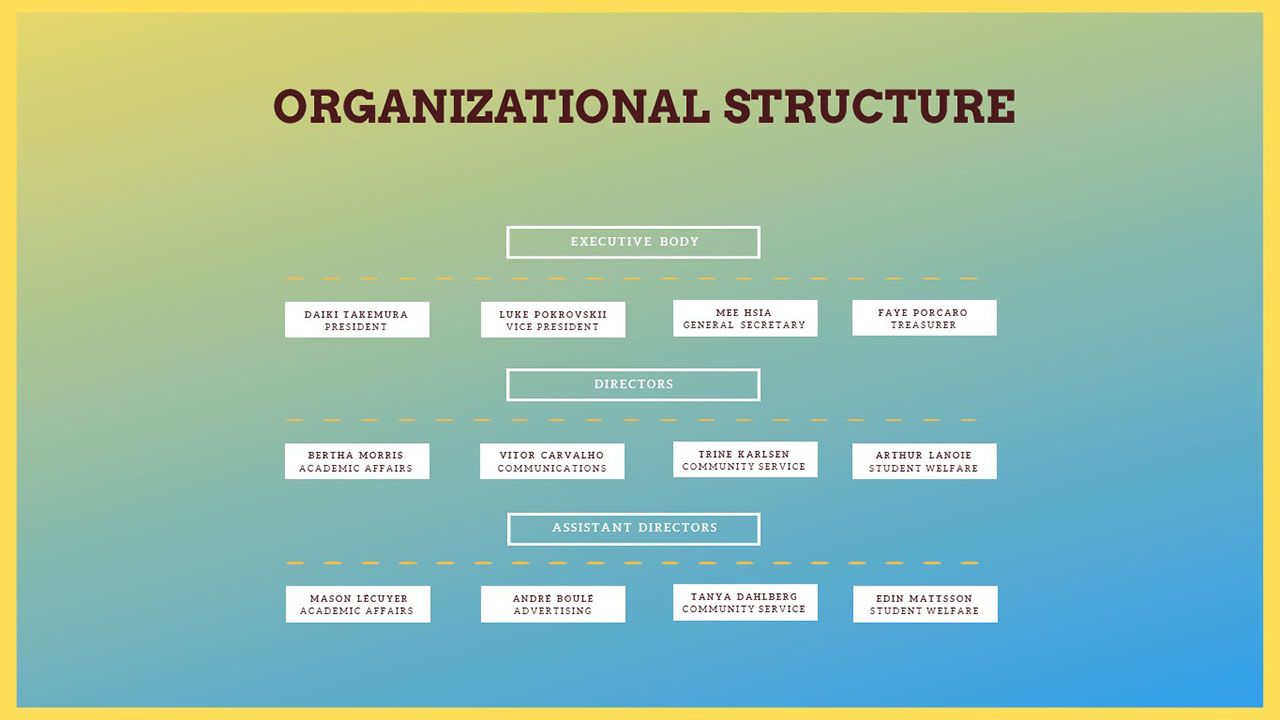Business organizations all over the world have different structures and cultures. The unique blend of structure and culture makes one organization different from another. They are similar to the signature of the organization. There are 6 elements of organizational structure that managers need to understand before developing the structure of the organization.
Contents
What is organizational structure?
The manner in which jobs and tasks are formally divided, grouped and coordinated is called organizational structure. Therefore, structure lies at the core of the organizational hierarchy. The task of developing the structure is perhaps one of the most challenging ones the top management of the organization ever makes.
The complexity of designing the structure arises due to the vastness of the issues managers need to keep in mind. For instance, a baby organization consisting of less than 5 members may survive and even thrive without a formal structure. However, as the organization grows to have around 25 members, significant changes to the structure may be required. Other dynamic factors are geographical expansion, launching of new products and services, going online, and of course unforeseen events like the Covid-19 pandemic.

Let us now have a look at the 6 primary elements of organizational structure.
Key Elements of Organizational Structure
There are 6 key elements of organizational structure. They are basically the top questions or issues that the designers of the structure must keep in mind.
Work Specialization
Work specialization is nothing but a simple division of labor. Its essence is to divide a specific job into several small steps. Different workers execute and specialize in each step. Therefore, we have workers who execute the same repetitive task every single day.
This type of structure is very common in the manufacturing industries. In fact, Henry Ford was one of the first people to develop this kind of structure. As a result, Ford manufactured a car every 10 seconds. Thus, a high degree of work specialization gives the benefit of speed and accuracy. Workers become trained and specialized to perform a particular task. Work specialization has also become the norm in other sectors, such as health care. The demand for specialized doctors, like cardiologists or gynecologists, have increased while the demand for general physicians has decreased all over the world.
There are several disadvantages of work specialization. Firstly, it makes tasks boring and monotonous. For instance, a worker responsible for sticking the company label to a chair made by others has to stick labels all day for years. Imagine how passive and boring it can be. Therefore, it might lead to a loss of motivation and productivity in workers.
Secondly, workers often do not satisfy the need to derive a sense of meaning and purpose from the work. For instance, they do not know how hammering a nail would make a difference in anyone’s life. This may lead to exhaustion and burnout.
Work specialization and productivity have a non-linear relationship (inverted U-shaped). As the degree of work specialization increases, there is an initial increase in productivity (impact of economies of specialization). However, soon the productivity decreases, in case the degree of work specialization is too high (impact from human diseconomies).
Departmentalization
After the job tasks have been divided through work specialization, there arises a need to categorize each specialization into meaningful divisions. Departmentalization is the basis by which jobs are categorized and grouped so that common tasks are coordinated.
The function is a very common basis of such classification. For instance, imagine a firm like Hyundai. There would be a department for sales, marketing, accounts, human resources, manufacturing, store overseers and so on. Grouping of similar tasks leads to the formation of departments within the organization. Let us make this simpler by looking at the HR department. There would be some employees responsible for over-viewing hiring and recruitment; some employees would see training and development, some would be responsible for appraisals and so on. These set of job tasks are clustered because they deal directly with the needs of the employees of the organization.
A second basis for departmentalization is by products. Many firms manufacture multiple products. For instance, Hyundai itself has many different models of cars. In addition, they have various car accessories and car servicing as well. It might make sense to have different departments for car sales and car servicing.
Other basis of departmentalization are geographical location, type of customer, the nature of the process and so on.
Chain of command
An organization’s chain of command is the unbroken line of authority that runs throughout the organizational hierarchy. The major benefit of the chain of command is clarifying who reports to whom.
Chain of command has two important aspects:
- Authority: It is the right of a manager in the hierarchy to give orders to employees at a lower level and expect them to be followed.
- Unity of command: This aspect makes sure that each employee has only one supervisor. It is important because it prevents work overload and confusion.
The fundamentals of the chain of command principle have changed over time. For instance, nowadays, the team culture has become common. Work teams often report to more than one supervisor. In addition, many employees work on multiple projects at the same time. Hence, the chain of command has evolved over time. Further, modern decentralized organizations do not have much in the name of a formal chain of command.

Span of control
It refers to the number of subordinates a manager can effectively and efficiently supervise. Generally, a wide or large span of control proves beneficial in terms of productivity and economy.
For instance, imagine an organization having 5000 employees. Around 6-7 organizational levels would be needed if the span of control is narrow. This would not only increase the expense of managerial salaries but also make vertical communication cumbersome. Further, subordinates would feel that they are being monitored too much.
Nowadays, organizations are increasingly having a wide span of control. As a result, the speed and effectiveness of decision making have improved. Wide-span of control is also beneficial because it allows all employees to have some amount of autonomy.
Centralization and Decentralization
Centralization refers to the degree to which decision making power is concentrated at a single point (usually with the top management) in the organization. In a decentralized organization, decision making power is distributed throughout the organization. As a result, they can make fast decisions and do not waste much time in bureaucratic nuances.
On the other hand, decisions are made by specific people in a centralized organization. As a result, decision making is often slow and cumbersome. It also places an excessive load on some employees and reduces the autonomy of others.
Both types of organizational structures are common. Start-ups usually have a decentralized structure. However, a moderate degree of centralization is needed as the organization grows in size and scale.
Formalization
Formalization is the degree to which jobs within an organization are standardized. High degree of formalization implies that the employee has very little autonomy and control. There would also be a lot of rules and regulations and explicit job descriptions that need to be followed strictly.
The extent of formalization depends on a lot of factors. For instance, the nature of the job itself. You would be required to follow the standard principles of the company to construct a road if you are a junior civil engineer. However, if you are a musician, you are free to develop your own tune.
Centralized organizations often have a higher degree of formalization. This is because employee hardly have any discretion in both the systems.
Concluding remarks
The type of organizational structure depends a lot on what kind of organization it is. Before moving on and considering the above six elements of organizational structure, it is advisable to have a thorough understanding of your organization. You need to know the history and culture of the organization. Structure and culture need to be aligned.
